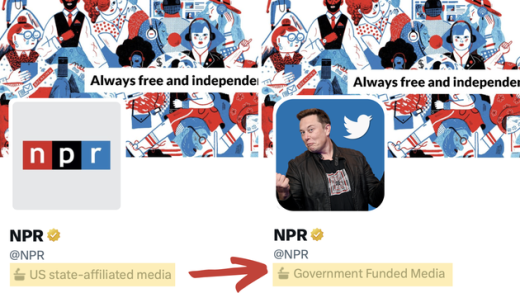A series of cryptic and chilling emails form the foundation of Vivek Shraya’s latest book, Death Threat, a graphic novel made in collaboration with artist and illustrator Ness Lee. Featuring vibrant, surreal and haunting illustrations, Death Threat portrays the series of hate mail, its effects on Shraya’s psyche—which oscillates between terror and fascination—and the genesis of the book project itself, which becomes its own way of challenging her aggressor. Although the book is charged at times with images of violence, it leans on humor and satire to portray the nuances of accessibility and embodiment in the internet age, and to complicate our ideas of online trolls. Trolls, as Shraya argues in the book, no longer conform to images of a lonely person living in the darkness of their mother’s basement. Trolls can be anyone, of any profession or background, anywhere.
Shraya’s bestselling book I’m Afraid of Men was part memoir, part declaration of the violence and aggressions she has encountered from childhood to adulthood. Considering the alarming rates of violence against trans women of color, Shraya’s work continues to provide personal context and a searing look at the work needed to push against transphobia. Shraya and I spoke over the phone to discuss the origins of Death Threat, her and Lee’s collaborative process, and the craft of the graphic novel.
Roberto Rodriguez-Estrada: Something I found really fascinating about Death Threat is that the book’s origin story is embedded in the plot. Towards the end you begin to see the collaborative process that took place between you and Ness Lee. How did you decide to include the graphic novel’s creation as an integral part of the plot?
Vivek Shraya: Well, I think because the topic has the capacity to be a bit morbid and perhaps depressing, I was really looking at the project as a way to diffuse the violence of these letters. So using elements like email and color, and also a meta-perspective, all allowed for me to do this. I was really inspired a couple of years ago when I read Alison Bechdel’s Are You My Mother? And the way so much of that graphic novel is about the process of making a graphic novel. For me, Death Threat is not that different because of the way the letters themselves had a pretty visual component. In a lot of ways, it felt like the letters were demanding to be illustrated so it really made sense to explore them.
RRE: Right! In one of the letters, the author says, “you need to return to the forest…” which is extremely visual.
VS: Exactly. As someone who gets trolled on the internet semi-frequently—having someone say something homophobic or racist or transphobic on Twitter, for instance—I just block that stuff. But when someone says something like “you need to return to the forest and be put in a separate hut and you will be consumed by the atmosphere and the universe,” that sort of thing felt to me more … for lack of a better word, poetic, than your average email. Because of the nature of the emails I found myself really imagining them from the beginning, which made them harder to shake off, unlike other forms of hate I’ve received on the internet.
RRE: In what ways did the emails infiltrate your dreams and your psyche when you first received them?
VS: I don’t remember the specificity of my dreams at this time, but I do remember a general anxiousness whenever I’d wake up and I think that it was more that, again, with general hate I receive I’m more easily able to block it out. But with these letters, because of the ways this person was conjuring religious texts, in addition to my mother and my family, they had a deeper impact. So I found myself thinking about them all the time. At first I thought that the first sentence of the email was so outlandish it was entertaining. For instance, the notion that my name is being chanted in someone’s house and someone says she needs to die. Trying to picture this is very bizarre. But I come from a Hindu background, where chanting is used as a way to make something real, as a way to invoke God. So because of my religious background, the practice of chanting is not something I take lightly and because of these various elements, I found the emails harder to shake off, and my sleep at this time definitely became jagged.

RRE: The emails are written in cryptic English with some Hindi and Sanskrit words peppering the text. Did you have to undertake a sort of research process to figure out what things meant? Was there any meaning to them or were they just bizarre things the writer of the emails came up with?
VS: This is where I see the project as more fiction than nonfiction because I wasn’t really trying to research the parameters in which this person was trying to hurt me. It was more about: Okay, there’s this strange message and how do I illustrate this message. So, one of the figures that comes up is this sage and I have to go see them in the forest, but it’s less about trying to figure out if there’s some cultural, corrective practice that happens to trans people and more about drawing from the text.
RRE: Immediately after the first dream sequence, the character of Vivek is talking to her parents, explaining the email she received and that their names are mentioned in them. Have your parents seen the book? Do you show your parents everything you make or is there a boundary?
VS: No, they have not. There’s definitely a boundary and sometimes I’ve been accused of handling my parents with kid gloves. Being a person of color, I don’t come from an ideology that requires me to share everything that happens to me with my parents to have a healthy relationship—in scare quotes. When it comes to my art practice, they’ve gotten used to asking me, “So what’s your next book about?” And I might give them that sort of information, but they’ve never actually read a full book of mine. Maybe passages and sections. Actually, I take that back. They did read my children’s book.
But again there’s that accusation that I’m being overly protective of my parents, and that the things I’m trying to protect my parents from are my queerness and my gender. But really for the most part my parents are accepting in their own ways of those aspects of who I am. It’s often more the overt sexual elements of my work. Because I often feel like sexuality is missing from queer narratives or washed out from queer narratives, a lot of my books will feature explicit sexuality and that’s the kind of stuff where I just feel like, “Okay. I just don’t want my mom to know my relationship to penises or masturbating.”
RRE: And they’re in Canada, correct? Do they worry about you when you visit the U.S. given the overall climate under Trump’s administration?
VS: My parents don’t so much. They don’t really know a lot about what I do. [laughs] But my friends do. Some of my friends are very anxious every time I go to the U.S.
RRE: On a slightly different note, there are some particularly disturbing images of Donald Trump in the book. How did you end up including those?
VS: Well, again, it’s literally in one of the emails I received, saying something like Trump is going to ship me off to a military brothel. [Ness Lee] and I had several conversations about what to illustrate and what not to illustrate and I thought, why not a Trump figure? I remember getting a text from her really early in the morning saying something about the psychic difficulty of drawing Trump and I said that’s definitely something we should bring up in our interviews, is how I forced you to draw Trump.
RRE: In terms of the collaborative process, how did you and Ness determine the answers to big picture questions like what should be in the book and what shouldn’t, what to illustrate, what dialogue to include?
We decided to lean into the letter-after-letter structure, with the intention of creating that heightened feeling for the reader of receiving these non-stop letters.
VS: I think one of the biggest challenges for us was thinking about flow. The first Google Doc we had was just the letter themselves, and the starting point was: How do you construct a narrative from these letters? I knew the letters would be the emphasis of the book and I knew I didn’t want the book to be super text heavy. But beyond the letters, how do you tell the narrative from beginning to end? So I think that was the bulk of the conversations between me and Ness, trying to figure out what the action was taking place between the letters. We worried a lot about the monotony of including a letter, then oh! Here’s another letter, and oh! Here’s yet another letter, and so on. We didn’t want the narrative to get boring for the reader, so we asked: Should we be creating alternative scenes in between? But in some ways, we decided to lean into the letter-after-letter structure, with the intention of creating that heightened feeling for the reader of receiving these non-stop letters. This was definitely one of the many conversations we had.
In terms of what we decided to include and omit, Ness outlined every page and there were moments when we would ask whether two pages should be condensed into one page or one page should be split into a few pages, and I think a big part of it was about flow and pacing.
RRE: As someone who works with so many different media, how do you know which form is appropriate for a specific story or idea?
VS: Often it’s about being open to experimentation. Theoretically, Death Threat was really exciting as a concept for a graphic novel, but it wasn’t until I saw all the pages illustrated and printed that I thought, okay this works. There’s a part of me that definitely likes exploring different media, but it’s a leap of faith every time. And sometimes I’m wrong! I don’t always make the right decisions the first time. For example, a couple of years ago I wrote a song called “I’m Afraid of Men,” which was on my album Part-Time Woman, and it’s a song that nobody talks about, not in conversations with my friends or in reviews. Then a year later, I published a book by the same title that goes much deeper and it’s been one of my more successful projects. So there are definitely times when I make a choice around a theme and it doesn’t necessarily land how I hope. For me, that’s the sort of joy and pain of creation, having the willingness to try things out, and knowing that sometimes it’ll work and sometimes it won’t.
The post Vivek Shraya’s “Death Threat” Turns Online Hatred Into Art appeared first on Electric Literature.
Source : Vivek Shraya’s “Death Threat” Turns Online Hatred Into Art











